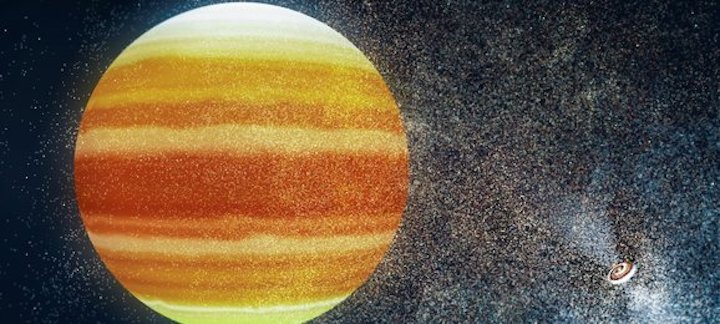
It is theoretically possible that habitable planets exist around pulsars. Such planets must have an enormous atmosphere that convert the deadly X-rays and high energy particles of the pulsar into heat. That is stated in a scientific paper by astronomers Alessandro Patruno and Mihkel Kama, working in the Netherlands and the United Kingdom. The paper appears today in the journal Astronomy & Astrophysics.
Pulsars are known for their extreme conditions. They are neutron stars of only 10 to 30 kilometers in diameter. They have enormous magnetic fields, they accrete matter and they regularly burst out large amounts of X-rays and other energetic particles. Nevertheless, Alessandro Patruno (Leiden University and ASTRON) and Mihkel Kama (Leiden University and Cambridge University) suggest that there could be life in the vicinity of these stars.
It is the first time that astronomers try to calculate so-called habitable zones near neutron stars. The calculations show that the habitable zone around a neutron star can be as large as the distance from our Earth to our Sun. An important premise is that the planet must be a super-Earth with a mass between one and ten times of our Earth. A smaller planet will lose its atmosphere within a few thousand years. Furthermore, the atmosphere must be a million times as thick as that of the Earth. The conditions on the pulsar planet surface might resemble those of the deep sea at Earth.
The astronomers studied the pulsar PSR B1257+12 about 2300 light-years away in the constellation Virgo. They used the Chandra space telescope that is specially made to observe X-rays. Three planets orbit the pulsar. Two of them are super-Earths with a mass of four to five times our Earth. The planets orbit close enough around the pulsar to warm up. Patruno: "According to our calculations, the temperature of the planets might be suitable for the presence of liquid water on their surface. Though, we don't know yet if the two super-Earths have the right, extremely dense atmosphere."
In the future, the astronomers would love to observe the pulsar in more detail and compare it with other pulsars. The ALMA telescope of the European Southern Observatory would be able to show dust discs around neutron stars. Such disks are good predictors of planets.
Probably our Milky Way contains about 1 billion neutron stars of which about 200,000 pulsars. So far, 3000 pulsars have been studied and only 5 pulsar planets have been found. PSR B1257+12 is a much-studied pulsar. In 1992, the first exoplanets ever were discovered around this object.
Quelle: ASTRONOMIE.NL
